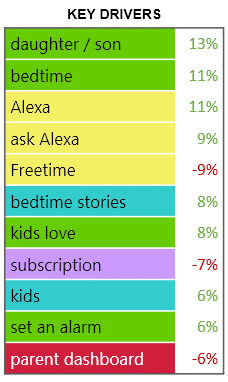
Imagine a pre-pandemic corporate office: cubicles, glass-walled offices, maskless people busy being busy. Now imagine that there’s a phone ringing somewhere in that office, non-stop, all day, every day. But no one ever answers it. It just keeps ringing plaintively, endlessly.
Impossible, you say? No company would ever ignore an endlessly ringing phone? Don’t be so sure . . .
Meet Your New Marketing Department: Your Customer
While “social media” has been a corporate buzzword for years, and marketing departments have spent fortunes tracking Twitter data and analyzing Instagram comments, one of the most valuable forms of social media has too often been ignored: consumer-generated online product reviews.
Well, ignored by the marketing departments, at least, but not by consumers, who have grown more and more reliant on online product reviews as a key part of their purchase process.
Today, checking online reviews before a purchase is almost ubiquitous: according to PowerReviews’ latest data, 99.9% of consumers read reviews when shopping online, and more than half (57%) do so when shopping in a brick-and-mortar store. Perhaps most telling, 98% of consumers now say reviews are an ‘essential’ resource when shopping, up 9 points since 2018.*
Clearly, online reviews have become a vital piece of the puzzle in the consumer buying process. Why? People seek confirmation. It’s part of our psychology. We want to know we’re about to make the right decision, and the internet is there to help us confirm our every hope and aspiration — or every concern and anxiety. Reviews are the friend we take shopping who tells us the shirt looks great on us, go ahead and buy it.
Except there isn’t just one friend, there are thousands upon thousands, telling each other what they like and what they dislike about a product, whether it’s a good value, how it stacks up against the competition, and so on. And no matter what imagery or benefits or perceptions the product’s manufacturer may try to imprint on the market, these online reviewers will still be busy creating and spreading their own product messaging, free of charge, wanted or not.
Who Hired These People?
As we’ve discussed here before, analysis of online reviews can provide valuable insight into what customers like or dislike about a product. For example, our analysis of the Amazon Echo Dot Kids Edition revealed the importance of bedtime and bedtime stories to customers —product associations tailor made for engaging a parent looking to purchase:
This table acts as a product scorecard of sorts, showing which aspects of the Echo Spot Kids Edition are having the strongest positive and negative impact on consumers’ review scores. The color of each term indicates the cluster it belongs to.
But while we can learn a great deal about a product by analyzing consumer reviews, it can be difficult to know exactly who is writing them. How representative are they of the customer base in terms of demographics, psychographics, and category behavior? What specific triggers prompt them to write a positive or a negative review — and how could a manufacturer encourage the writing of more positive reviews for its products?
And let’s not forget the readers of reviews in any given product category. How influenced are they by the reviews they read? What are they hoping to learn when they read reviews? What type of information gets them to click the purchase button?
The review writers, the readers, and the reviews themselves: three aspects of any product’s online presence that are becoming increasingly important to the purchase process — and thus should be explored and understood by every company selling a product or service online. After all, the better a company understands its customers, the better it can deliver products that meet their expectations. And if a product’s online “review conversation” reveals any red flags or potential problem areas. . . well, remember that phone that keeps ringing in the distance, somewhere in corporate HQ? Isn’t it time to answer it?
We’ve written before about using online reviews as a source of consumer data, and we continue to devote time and attention to understanding how online reviews impact consumer choices. Come visit MAi Research to see what we’re up to . . .
* PowerReviews: The Complete Guide to Ratings & Reviews (2022 Edition)










